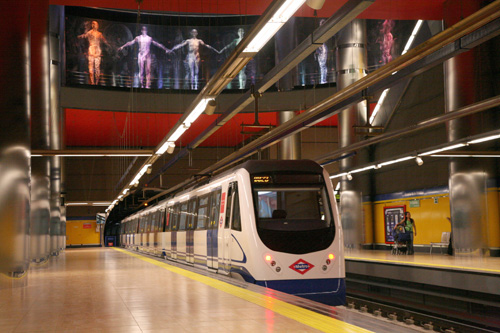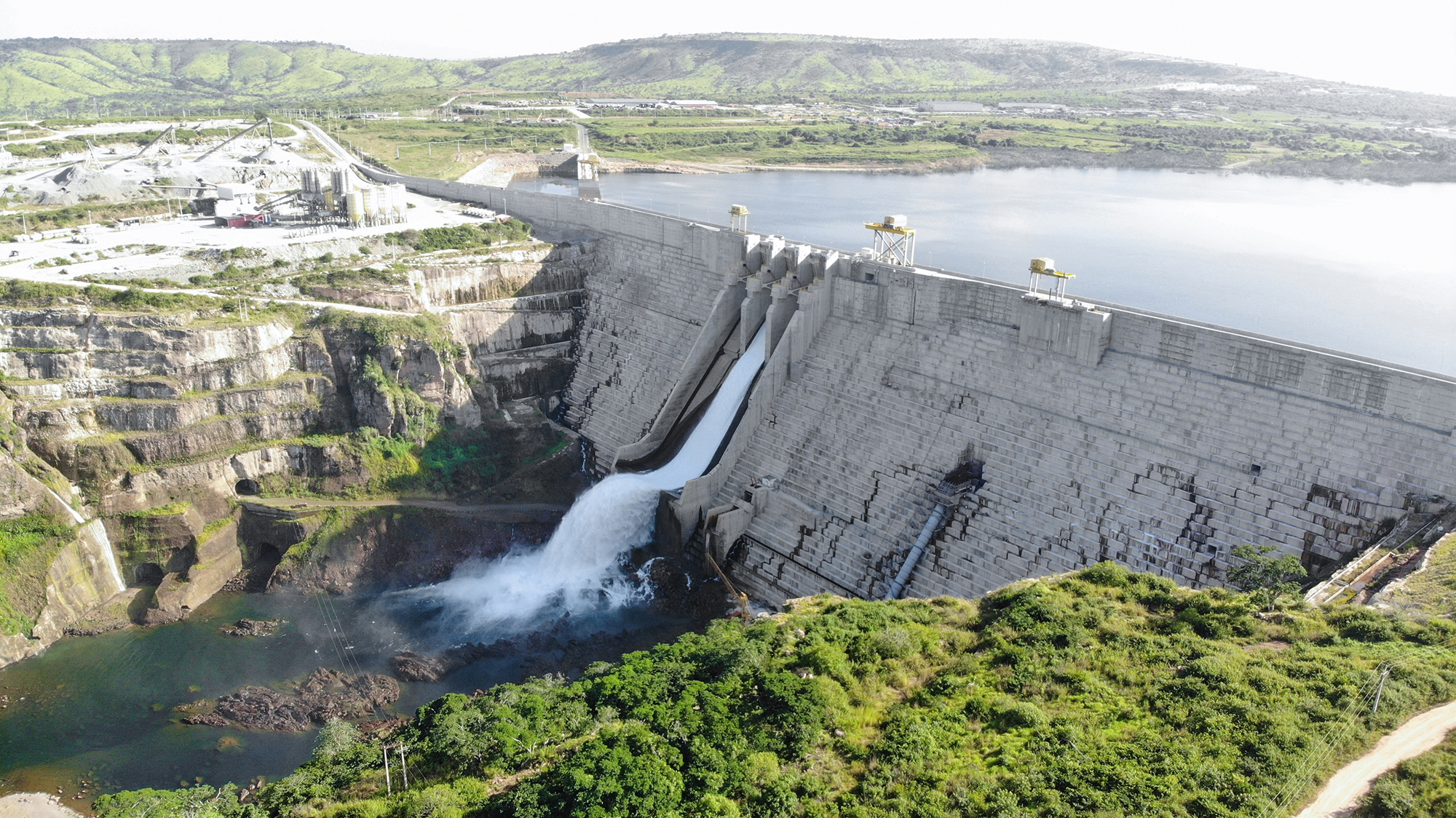
The first line on Madrid’s underground railway network, the Metro de Madrid, was inaugurated on the 17th October 1919 by King Alfonso XIII. It had eight stations along 3.3 kilometres of track. Ever since that date the Metro has experienced progressive growth, which has made access possible to the majority of the capital's districts and to some of the most important municipalities in the metropolitan area. Today it is the sixth longest metro system in the world, with 300 stations and 292 kilometres of track, 90 percent of it underground. In 2011 Metro de Madrid carried 635 million passengers at an average speed of nearly 31 kilometres per hour, with a high degree of automation and with state of the art rail signalling, safety and access systems.
Their security is very important to Madrid’s travelling public. “In a survey of the expectations of our customers, safety was the second most important factor, only surpassed by speed,” says CEO Ignacio González Velayos. The safety systems installed throughout Metro de Madrid are all best of breed and are monitored permanently from the Command Post, the nerve centre of the system. Safety is inseparable from environmental performance, he believes. “Society is not content merely with meeting the need for mobility, but it demands that this should be achieved in a way that is sustainable in economic, social and environmental terms.”
One of the largest engineering projects was completed a decade ago in 2003 when the Metro expanded its network into the satellite towns of Móstoles, Fuenlabrada, Alcorcón, Leganés and Getafe, bringing the service to a million additional people and providing a direct connection to Madrid Airport. In all this added 50 kilometres of tunnel to the system. Nevertheless the company has continued to invest, spending €40 million in 2012 and budgeting the same amount for 2013.
This money is not being used for further extension of the network at present according to Velayos: “We are not immune from the austerity that the Community of Madrid has to exercise in its budget. But let’s not forget that thanks to the very important efforts by our authorities over the last decade we have been able to almost double our network and give the people of Madrid access to a suburban train network, known throughout the world. At the moment our investment strategy is not aimed at further expansion of the network but at the services and features requested by our customers. Today’s travellers are not content to simply go from one point to another: they want to do it quickly, safely, and with access to high quality complementary services.”
Minds are being concentrated in the municipality by the Madrid 2020 project, Spain’s bid for the next but one Olympic Games. We won’t know till September 2013 whether that will come off but meanwhile Metro de Madrid continues its programme aimed at adapting its infrastructure to meet the needs of its customers. In recent years this has seen a programme to improve travel times and the introduction of a new technological platform to support contactless card payment and extend that system to the entire network.
Metro de Madrid’s recently established Interactive Customer Support Centre (CIAC or Centro Interactivo de Atención al Cliente) has already dealt with 1,755,000 enquiries. “The centre,” says Velayos, “deals directly and personally, all year round between the hours of 8 am and 10:00 pm, with all information requests received, not only in relation to the service provided by the company but also to any other information about events and socio-cultural activities in Greater Madrid, as well as lost property. There are also face to face Customer Service Centres at the airport and major stations, which deal with enquiries in a more personal manner.”
Metro de Madrid is a major job creator, at a time when Spain needs all the jobs it can get. Apart from the 7,500 people on its direct payroll, Ignacio González Velayos points out, Metro de Madrid has agreements and contracts with other companies, public and private, which in turn have their own employees, which multiplies the creation of job roles. “Our public sector contracting law obliges us to put out our projects for tender, and many of these tenders are won by local companies.”
Each year Metro de Madrid rolls out its programme of continuous improvement in technology, innovation and research. “We are always looking for ways to improve our business model as a public service transport provider. Metro de Madrid wants nothing less than to be looked to as a global benchmark in every aspect of urban passenger rail.” Its commitment to quality, he adds, is demonstrated by the certificates received by Metro de Madrid over the last year for, among others, the Management of Quality Service within Public Transport, Environmental Management, and Health and Safety Management.
The company holds an ISO-14001 certificate in Environmental Management and invests in renewable energy sources. In 2009 it commissioned its first geothermal air conditioning system at Pacifico station. This system offers many advantages compared to traditional systems, such as energy savings and greater independence from the electrical supply. Geothermal energy savings reduce CO2 emissions by 50 percent while also reducing noise pollution, since the heat pumps operate quietly. Other advantages of this system include low maintenance costs and increased useful life of equipment and installation. “Rail in general, and in particular the Metro, is one of the most efficient and sustainable modes of transport,” says Velayos. “Metro de Madrid has always supported all aspects of sustainability, including those concerning the environment.”
Two years ago the company decided to launch itself across the social networks as an alternative way to interact with its customers – today it has more than 35,000 followers. And the company makes great efforts to engage with the social programmes that matter to its customers. It helped publicise Twelve paths for living after cancer, a campaign organized by the Madrid Institute of Oncology, through a photographic exhibition spread over twelve stations, in which twelve people who have survived cancer delivered messages of hope. More than 3,000 people took part in You’re just a metro away from saving many lives a campaign organized by the Spanish Red Cross, Coca Cola and Metro de Madrid, which turned four stations into blood donation centres run by the Red Cross. And Metro de Madrid supports overseas projects too: every year it runs a Cinema in Concert initiative, for Fundación Padre Arrupe’s grant fund, which covers the cost of schooling of the children at Colegio Español Padre Arrupe in El Salvador.
Written by John O'Hanlon, research by Louisa Adcock



 MetrodeMadrid-Euro.T&L-May13-Bro-s.pdf
MetrodeMadrid-Euro.T&L-May13-Bro-s.pdf









